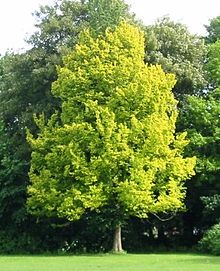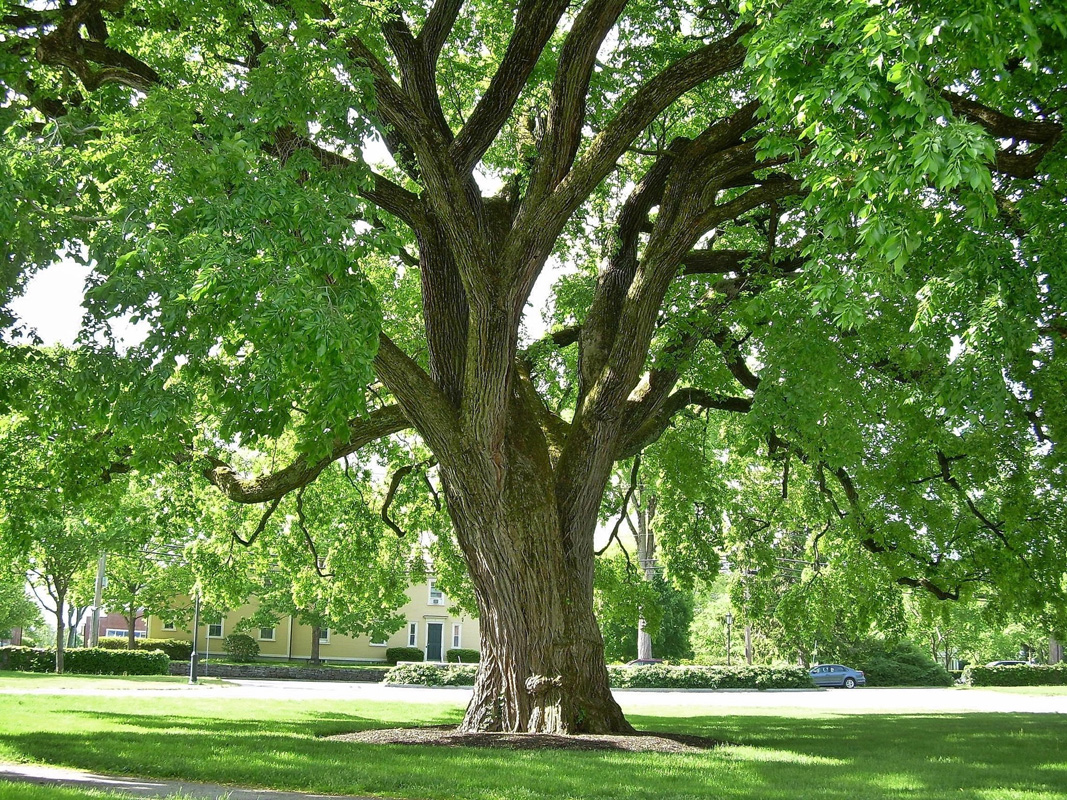The genus Ulmus encompasses elm trees, which exhibit characteristics of both deciduous and semi-deciduous varieties. Towering up to 100 feet (30 meters) in height with a spread of 75 feet (22 meters), elms are majestic shade trees. Some elm species display an umbrella-shaped canopy, while others have tall, upright growth patterns. The majority of elm trees are characterized by oval-shaped leaves with serrated edges, pointed tips, and visible veins.
There are 35 different species of elms, with eight of them found in North America. The most diverse array of elm trees is found among the Asiatic elms, which include the tall and bushy varieties. These native elms can be found in China, India, eastern Siberia, and Central Asia.
Identifying the specific species of elm trees can be done by examining the bark, leaves, and other distinguishing features.
Fascinating Facts about Elm Trees
Elm trees are renowned for their wide and sprawling canopies, making them a common choice for providing shade in residential areas, backyards, and parks.
The deeply ridged bark and serrated leaf margins make elms easily recognizable. Some elm varieties also produce beautiful flowers. After blooming in spring, elm trees produce seeds encased in oval papery structures called samaras.
Elm wood holds significant value in the timber industry. It is known for its durability, resistance to rotting, and resistance to splitting. Despite its sturdiness, elm wood retains its flexibility. It is used in the construction of ship keels, archery bows, furniture, and musical instruments.
Dutch elm disease, a fungal infection that affects the sapwood of the tree, poses a major threat to elms. This disease led to the near devastation of American elms (Ulmus americana) across the United States. To prevent the spread of Dutch elm disease, it is crucial to identify and remove infected elms to protect other elms in the vicinity.
Fortunately, certain new species and cultivated forms of elm trees display greater resistance to Dutch elm disease, providing hope for the preservation of these magnificent trees.
Elm Tree Leaves
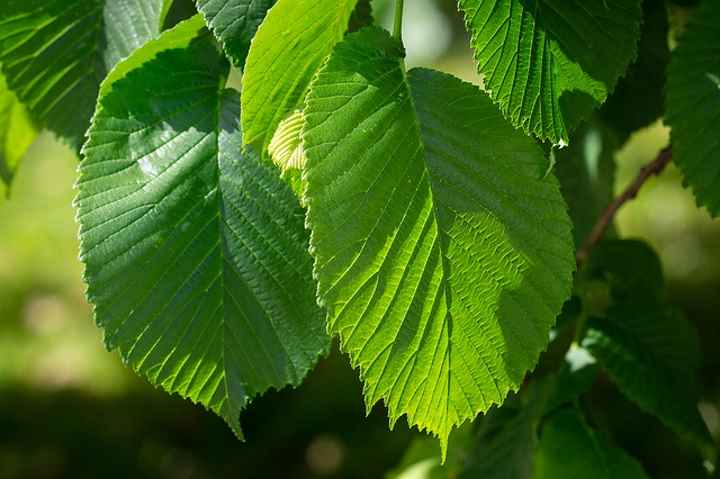
Elm trees showcase leaves with serrated edges and a pointed tip. Each leaf prominently displays visible green veins, as depicted in the illustrations. The leaf blade exhibits a jagged contour, with the left half being slightly shorter, giving it a somewhat asymmetrical appearance.
The average length of leaves in most elm tree species ranges from 4 to 6 inches (10 to 12 cm), while their width measures between 2.5 to 3.5 inches (7 to 9 cm).
Elm tree leaves typically exhibit shades of light green to dark green. As the seasons change, depending on the specific species, these leaves transition to hues of golden yellow or muted yellow during autumn.
Moving on to the bark of elm trees, it showcases deep furrows and a scaly texture. The color of the bark is a dark grayish-brown. These vertical crevices intersect, creating an intricate web-like pattern. Some elm tree varieties are colloquially referred to as “lacebark elm” due to the lace-like textures visible on their trunks and branches.
Elm Tree Seeds

The seeds of elm trees are small and round, enclosed in an oval papery structure called a samara. These samaras, which are light green in color, cluster together, with each one containing a single seed. During the spring, following the tree’s flowering period, the elm seeds disperse and spread.
Identifying Elm Trees
Elm trees can be recognized by their gray bark adorned with deep furrows, as well as their pointed oval leaves with double-serrated edges. These leaves contribute to the tree’s impressive canopy, which spreads widely and catches the eye from a distance. During the spring, elm trees produce small clusters of blooms that transform into spherical samaras, also known as elm seeds. As autumn arrives, the leaves of elm trees transition to a beautiful golden yellow color.
Types of Elm Trees (With Pictures)
American Elm (Ulmus americana)
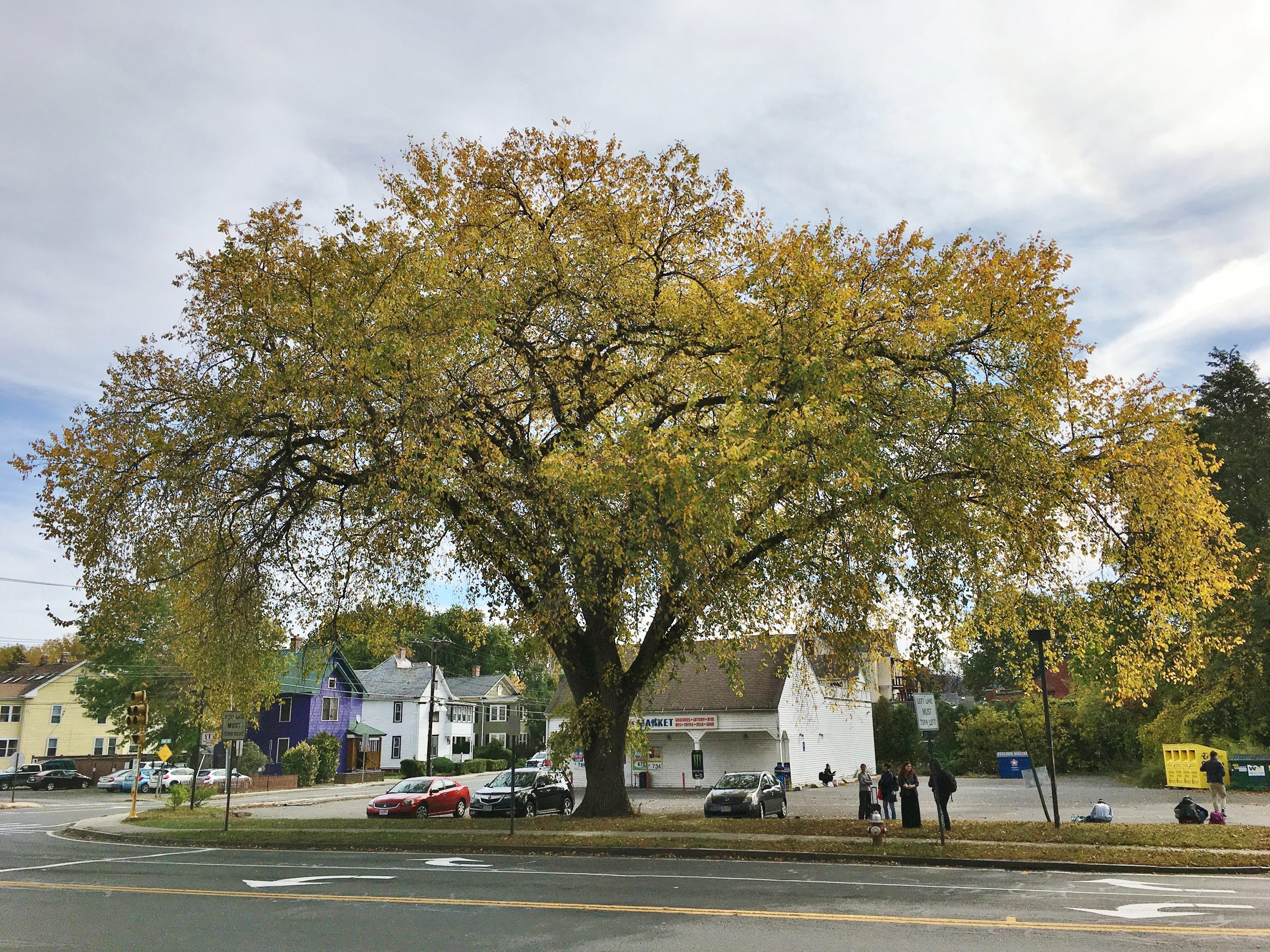
The American elm tree, characterized by its expansive umbrella-shaped canopy, is a magnificent deciduous giant. Reaching heights of up to 80 ft. (24 m) and boasting a wide-rounded crown spanning 75 ft. (22 m), these majestic trees, also known as white elms or water elms, leave a lasting impression. Unfortunately, their popularity has declined due to their vulnerability to Dutch elm disease.
The bark of the American elm features deep diamond-shaped crevices and wide ridges. Its coloration is a grayish-brown hue, adding to the tree’s distinctive appearance.
Leaves of elm trees, specifically those from American elms, are ovate in shape and measure between 3 to 5 inches (7.5 to 13 cm) in length and width. These green elm leaves exhibit double-serrated and irregular edges. The leaf blade showcases visible veins on its surface and possesses a smooth texture.

Florida Elm Tree (Ulmus americana var. floridana)
The Florida elm, a fast-growing tree, is smaller in size compared to the American elm. It features ovate-shaped leaves with serrated edges, which contribute to the tree’s vase-like silhouette. The bark of the Florida elm shares a similar color and texture to that of the American elm.
Chinese Elm Tree (Ulmus parvifolia)
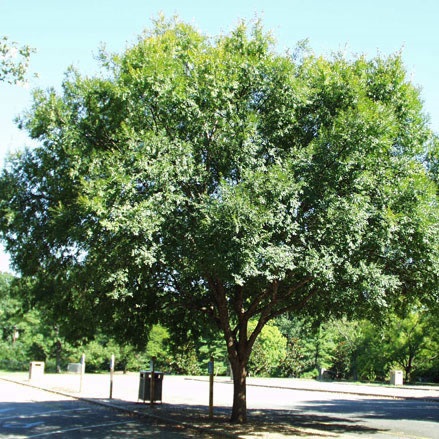
Chinese elms, also referred to as lacebark or drake elms, are petite deciduous or semi-deciduous trees characterized by their slender trunks and bushy crowns. They typically reach heights of 33 to 60 feet (10 to 18 meters). These elms are often utilized in landscaping as ornamental or shade trees.
One distinct feature of Chinese elm trees is their flaking bark, which showcases thin patches of orangey color interspersed throughout.
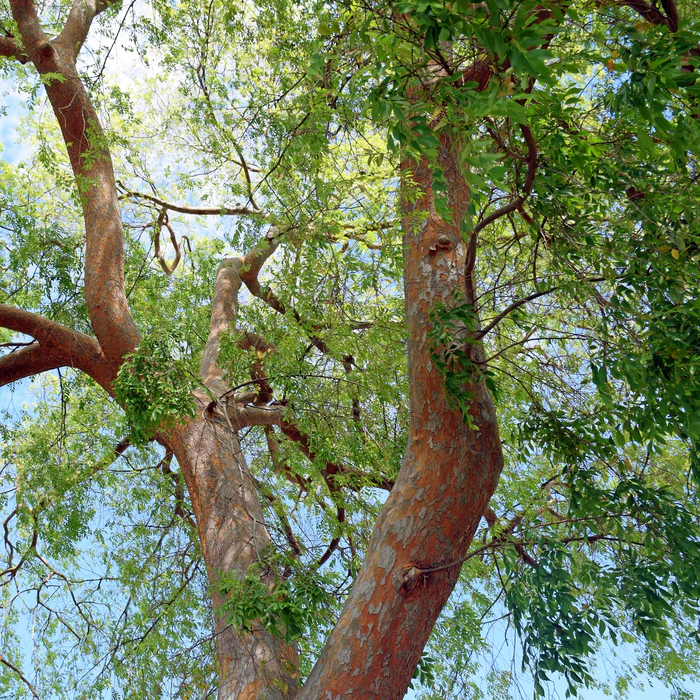
Chinese elm leaves are tiny and leathery, with single-toothed borders, and they have a short life cycle.
Bosque elm trees, scientifically known as Ulmus parvifolia ‘Bosque’, are elegant and towering trees with an oval-shaped canopy and slightly drooping branches. They are a cultivated variety of the Chinese elm. Bosque elms are highly favored as shade trees in parks and suburban areas. One notable aspect of this elm tree cultivar is its peeling bark, which adds to its visual appeal. Additionally, during autumn, the Bosque elm displays striking golden-red leaves, further enhancing its allure.
Typically, Bosque elms are relatively small in size, reaching heights of less than 6 meters (20 feet), and they are known for their rapid growth rate.
Cedar Elm Tree (Ulmus crassifolia)

The cedar elm, a deciduous tree native to North America, is predominantly found in Texas. It can grow to an impressive height of 82 feet (25 meters). With its expansive rounded crown and lush green foliage, the Texas Cedar Elm makes a striking presence. This elm variety showcases large, oval-shaped green leaves and rough bark, contributing to its overall grandeur.
Interestingly, in certain growing zones, Texas elms can exhibit semi-deciduous or even evergreen characteristics, despite shedding their leaves in the autumn.
Aside from its common name, cedar elm is also referred to by other names such as basket elm, scrub elm, southern rock elm, and lime elm.
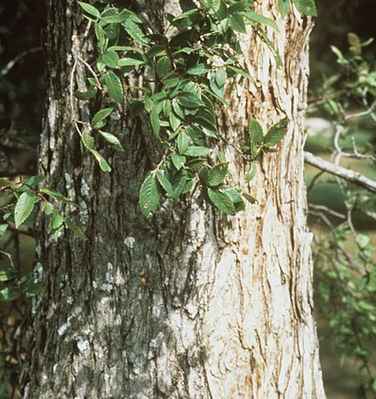
Elm trees in Texas possess the smallest leaves among all native Ulmus species in North America. These leaves measure approximately 2 inches (5 cm) in length and 0.7 inches (2 cm) in width, featuring distinct jagged edges.
Siberian Elm Tree (Ulmus pumila)
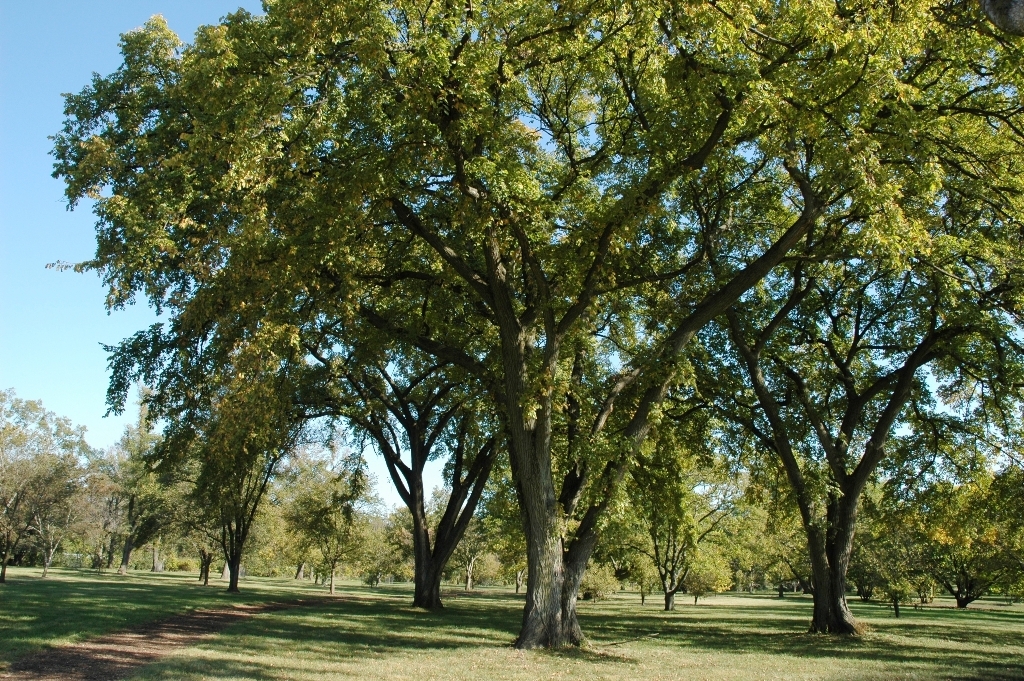
Siberian elm trees are compact to medium-sized trees with dense foliage forming a rounded crown. They are often mistaken for the Asiatic elm or Chinese elm. The Siberian dwarf elms can grow between 50 and 70 feet (15 and 21 meters) tall.
Noteworthy characteristics of Siberian elms include small red flowers, winged seeds, and brittle branches that are prone to breakage.
The bark of Siberian elms is gray in color and displays vertical fissures that extend along the trunk.
Siberian elm tree leaves have a lustrous dark green coloration with serrated borders and are usually arranged in pairs. The leaves are 1.2 inches (3 cm) broad and 3 inches (7 cm) long.
Japanese Elm Tree (Zelkova serrata)
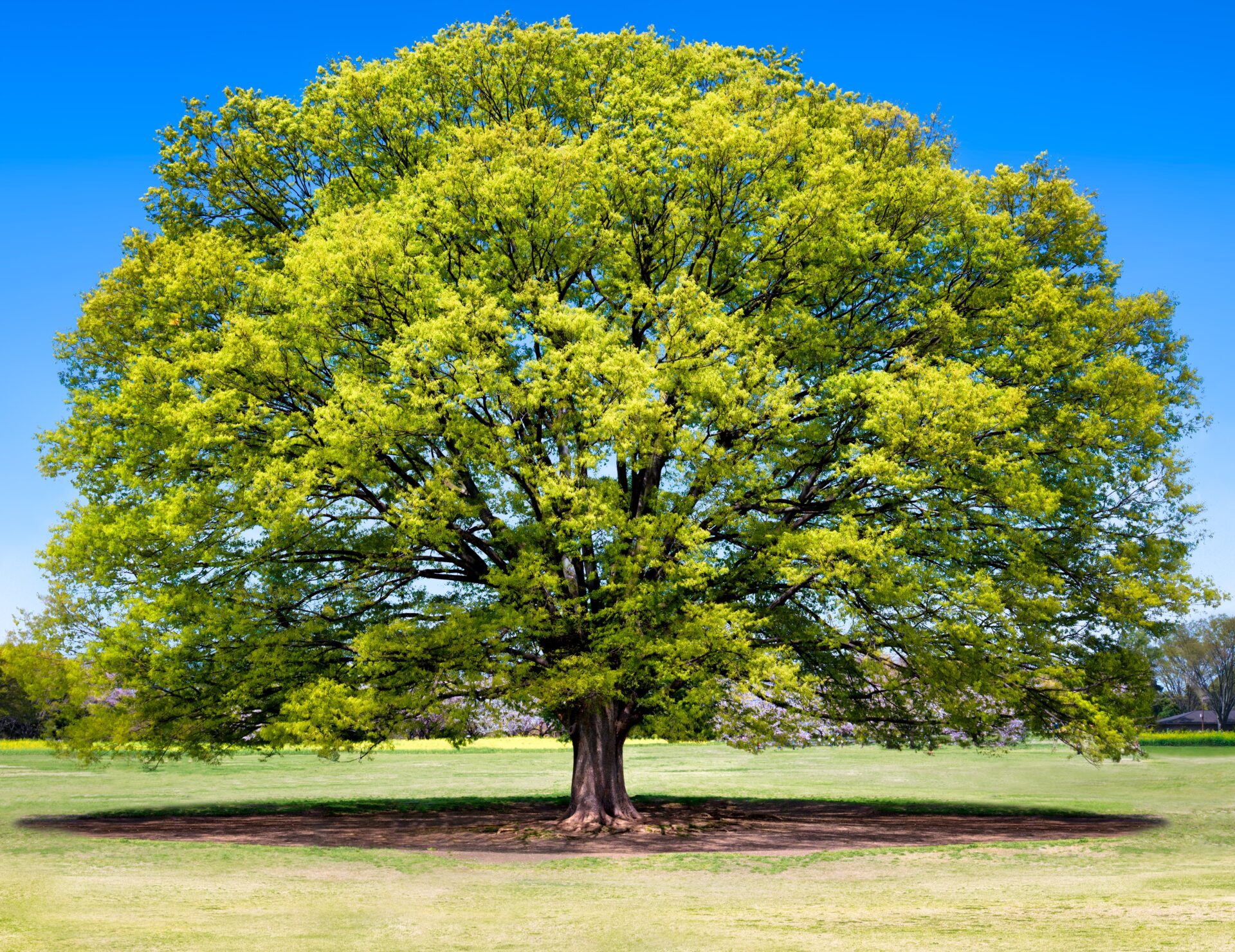
Japanese elms, scientifically known as Zelkova serrata, are notable large deciduous trees with expansive canopies and a rounded growth habit. They are easily identifiable by their short trunks that branch out into numerous spreading branches. These majestic elms can reach heights of up to 55 feet (16 meters), creating an impressive presence.
One of the key reasons Japanese elm trees are widely used as ornamental shade trees is their resistance to Dutch elm disease.
In terms of bark characteristics, Japanese elms exhibit a smooth texture compared to other elm species. The bark typically ranges from grayish-brown to grayish-white and tends to flake off in patches.
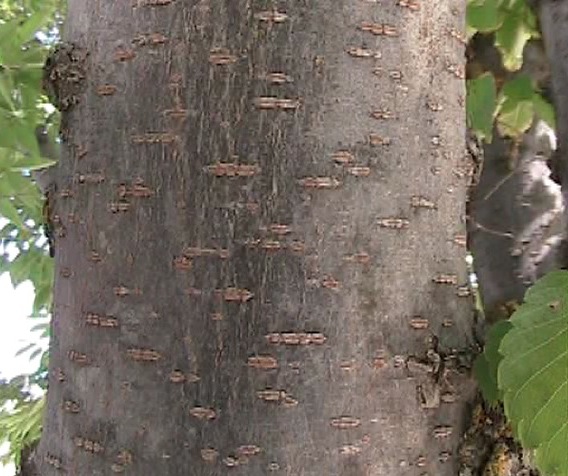
Japanese elm tree leaves have serrated edges and are oblong-ovate in shape. The rounded base and pointed tip of the tiny light green leaves.
Cherry-Bark Elm (Ulmus villosa)
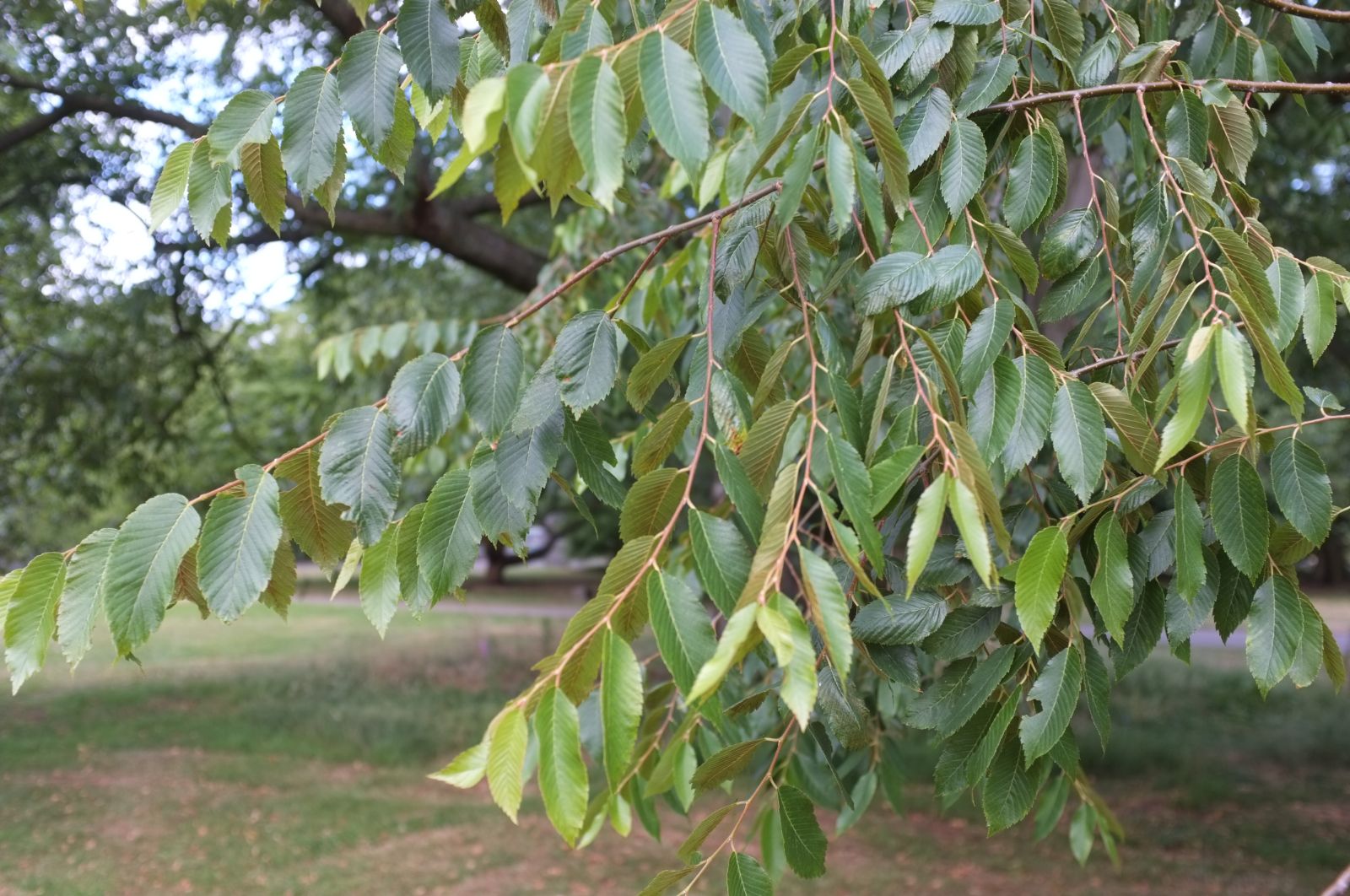
Marn elms, also known as cherry-bark elm trees, are magnificent and robust trees with a rounded shape that can reach heights of 82 feet (25 meters). The elm tree’s thick trunk sometimes obscures the smooth bark, while the elliptical shape of their samaras sets them apart.
These cherry-bark elms, with their elongated leaves, are commonly planted as shade trees in parks, and they possess resistance to Dutch elm disease.
The bark of cherry-bark elms is characterized by a smooth texture with flaky bands that encircle the tree, reminiscent of birch trees. The bark exhibits an interesting blend of smoothness and flakiness.

Cherry-bark elm trees feature long, oblong, brilliant green leaves with crisp margins. The pointed tip of marn elm leaves, which are up to 4″ (11 cm) long and 2″ (5 cm) broad, distinguishes them from those of other trees.
Wych Elm Tree (Ulmus glabra)

The wych elm, commonly referred to as the Scotch elm, is a prominent elm species native to Europe, known for its expansive umbrella-like canopy. The majestic crown of Scotch elms can reach towering heights of up to 130 feet (40 meters). This deciduous elm thrives across Northern Europe, displaying resilience in cold climates.
Wych elms are characterized by their stout trunks, spreading branches, and distinctive winged samaras.
As the tree matures, the bark of the wych elm develops fissures. Initially, it appears gray and smooth, but over time, it darkens in color and takes on a rough texture.

Scotch elms or wych elm leaves are large, broad, and have ovate shaped blades. The leaves are up to 6.5 inches (17 cm) long and 5 inches (12 cm) broad, and they are lime green.

Golden Wych Elm (Ulmus glabra ‘Lutescens’)
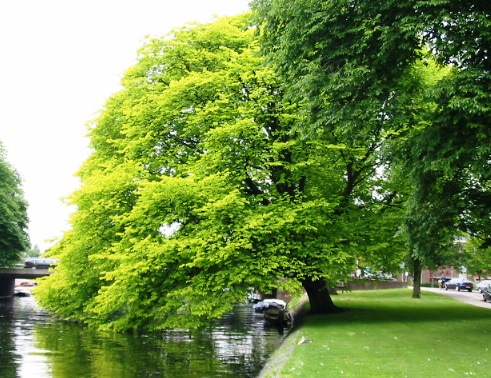
A smaller cultivar of the species Ulmus glabra, golden wych elms are a valuable tree. This elm grows to be no more than 50 feet (15 meters) tall and has a 65-foot-wide (20-meter) umbrella canopy.
When growing in full sun, this wych elm cultivar has bright yellow leaves that are a distinguishing feature.

Camperdown Elm Tree (Ulmus glabra ‘Camperdownii’)
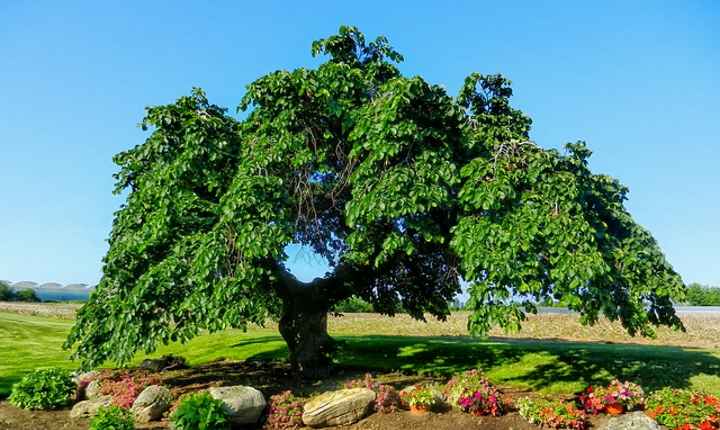
The Camperdown elm, also known as the ‘weeping elm,’ stands out with its cascading branches, which lend it its alternate name. Unlike typical elm trees, the Camperdown elm exhibits a flattened canopy and gracefully drooping branches. This distinctive weeping elm variety reaches a height of 15 to 25 feet (4.5 to 7.5 meters).
The bark of the Camperdown elm features a straight, upright pattern and appears grayer and smoother compared to the bark of English elm trees.
Large, double-toothed leaves with prominent veins and a rough texture characterize the Camperdown elm. In autumn, the leaves of this weeping elm transform into a dull yellow color, growing up to 6 inches (15 cm) in length.

English Elm (Ulmus procera)
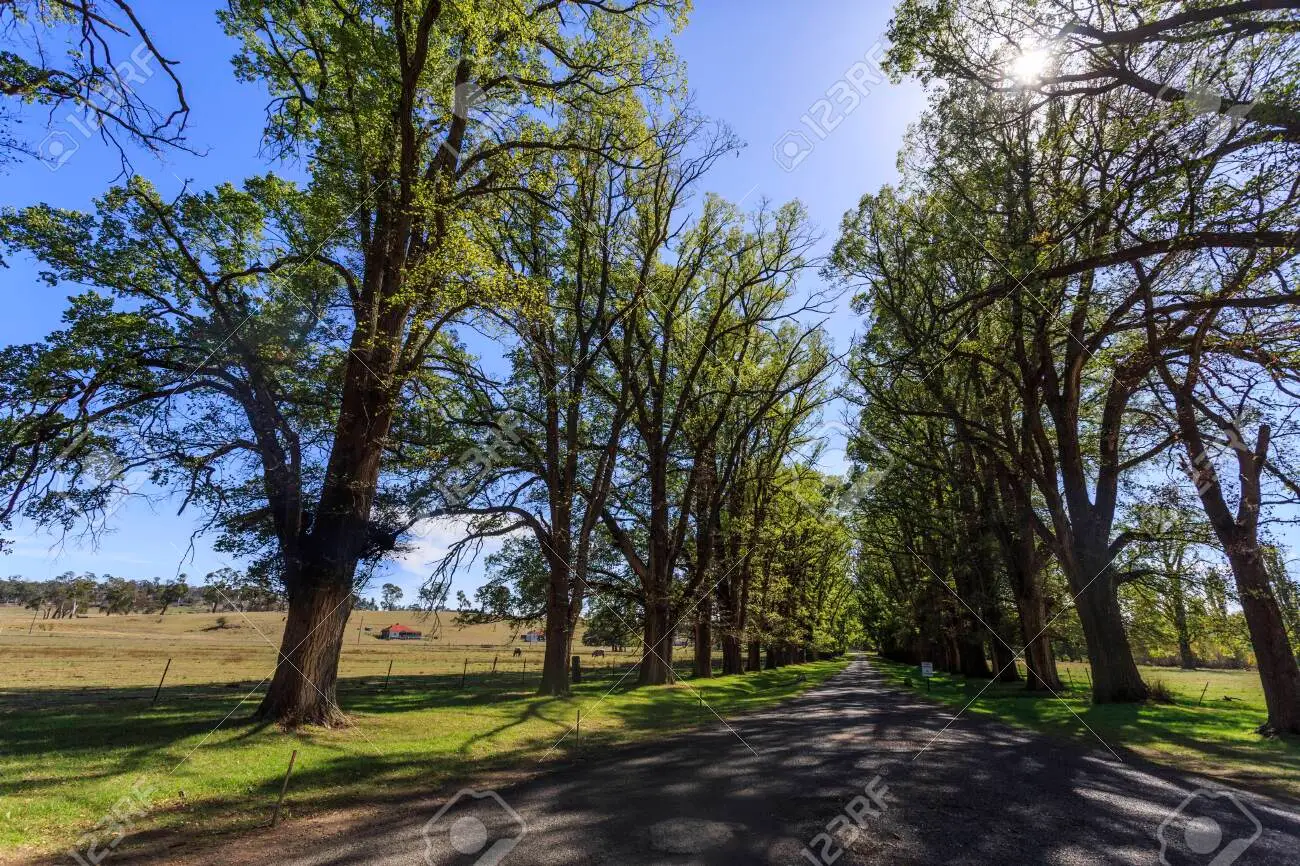
English elm trees are magnificent deciduous giants, boasting rugged bark and coarse leaves. These impressive elms can be used in hedgerows or cultivated as expansive tree-like shrubs within gardens, showcasing their versatility despite their size. The tallest mature English elm trees can reach towering heights of up to 100 feet (30 meters).
The bark of English elms is rough and marked with deep fissures, lending the tree a distinctive texture. Its coloration is predominantly grayish-brown, adding to the tree’s allure.

English elm leaves are black green with serrated edges and an asymmetrical base. Elm tree leaves: These elm leaves are between 1.5 and 3.5 inches (4 and 9 cm) long, as compared to wych elms.
Field Elm (Ulmus minor)
Field elm trees are characterized by their tall and elegant stature, featuring small leaves and rough bark that sets them apart from other elm varieties. The botanical name for the field elm’s glossy green leaves is Ulmus minor. In field environments, these elms can reach impressive heights of up to 100 feet (30 meters).
The bark of field elms is distinct, resembling blocks of wood along the tree trunk, with a rough and furrowed texture. The coloration of the bark typically ranges from gray to brown, adding to the unique features of this elm tree species.

Field elm trees have little, smooth leathery leaves with an asymmetrical base and a pointed tip. The leaves are between 2.3 and 6 inches (6 to 15 cm) long, with double teeth along the edges.
English Elm ‘Atinia’ (Ulmus minor ‘Atinia’)
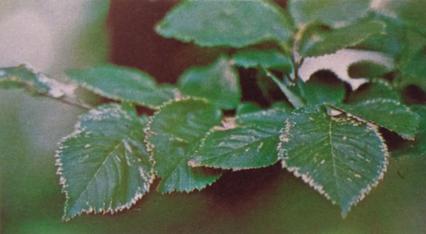
The English elm cultivar known as ‘Atinia,’ also referred to as common elm, is one of the largest deciduous trees in Europe. It is recognized for its rapid growth. Towering English elms can reach impressive heights of around 130 feet (40 meters) and possess thick trunks measuring approximately 6.5 feet (2 meters) in diameter. The distinguishing feature of this English elm variety lies in its leaves.
The bark of the ‘Atinia’ elm is light gray in color, displaying shallow furrows and a slightly scaly texture.
The leaves of elm trees, including the English elm ‘Atinia,’ are nearly oval-shaped and feature a blunt tip, which is characteristic of elm leaves in general. When observing the leaves of the English elm ‘Atinia,’ look for edges that resemble teeth pointing upward, along with an asymmetrical base.
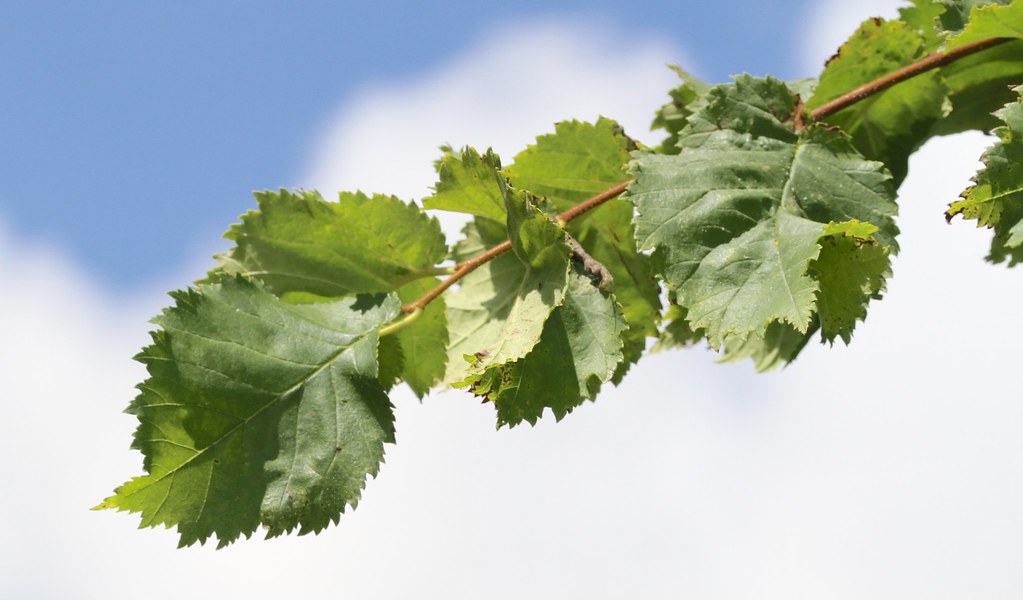
Indigenous to North America, the slippery elm, a medium-sized Ulmus species, is known by various names that reflect its distinctive characteristics. It is often referred to as gray elm, soft elm, or red elm due to certain qualities of its bark, including its color and soft texture.
In terms of appearance, slippery elms bear resemblance to American elms. However, they can be differentiated by their red inner bark, chestnut-brown buds, and fuzzy twigs. Red or slippery elms generally reach heights of around 40 to 62 feet (12 to 19 meters), making them smaller than their American counterparts.
The mucilaginous inner bark of the slippery elm holds medicinal properties and is commonly used to create herbal remedies. It is also recognized as Indian elm, reflecting the Native Americans’ traditional use of the red bark in their medicinal practices.
The bark of slippery elms presents a scaly texture, with reddish-gray coloration and long shallow furrows.
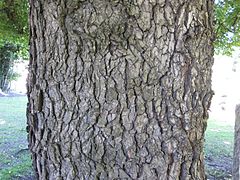
The leaves of the red elm, or slippery elm, exhibit an obovate shape, characterized by a broad rounded end and a narrower base. These leaves have a textured upper surface that feels rough to the touch, while the underside has a velvety texture. Like other elm tree leaves, they feature serrated edges. During autumn, the leaves of the slippery elm undergo a transformation, transitioning from a vibrant red hue to a dull yellow color.
European White Elm (Ulmus laevis)

European white elms are deciduous trees with a rounded crown and an open branch structure. They can grow to impressive heights of up to 100 feet (30 meters). The wych elm, another native European tree species, bears a striking resemblance to the European white elm.
One notable characteristic that sets the European white elm apart is that it is among the first elm trees to shed its leaves in the autumn.
When young, the bark of European white elms appears pale gray and smooth. As these elms mature, the bark takes on a grayish hue and becomes scaly, with hints of reddish-brown bark visible.
European white elm leaves have the typical elm-leaf toothed edging and lopsided appearance, with ovate leaves.
Dutch Elm (Ulmus hollandica)
Hybrid elms, resulting from the crossing of wych elms (Ulmus glabra) and field elms (Ulmus minor), including the Dutch elm, offer a unique combination of characteristics. These hybrids, when bred with Dutch elms or other elm species, can grow to towering heights of up to 130 feet (40 meters). They typically exhibit a conical shape, showcasing light-colored and serrated ovate leaves. Numerous cultivars of these elm hybrids are available, each with its own distinct attributes.
